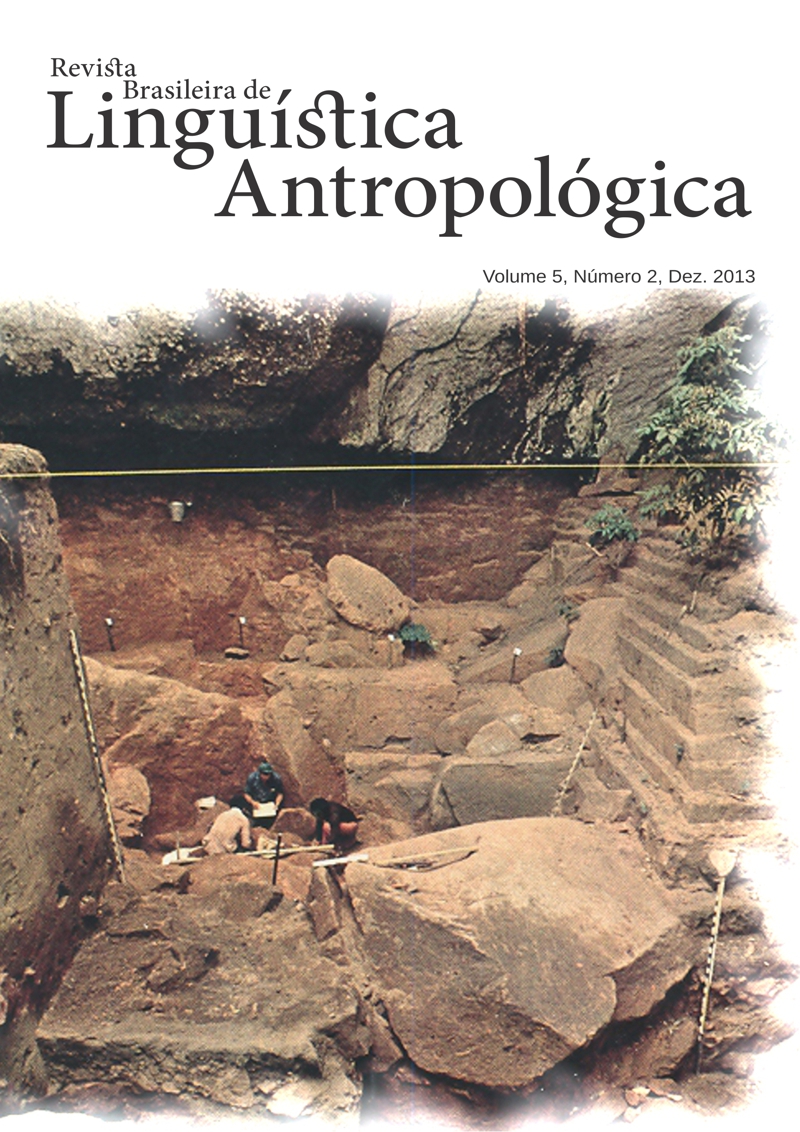O modo Indicativo II em Tentehára: considerações históricas
DOI:
https://doi.org/10.26512/rbla.v5i2.16273Keywords:
Linguística AntropológicaAbstract
O presente artigo trata do modo indicativo II nas duas línguas Tenetehára ”“ o Tembé e o Guajajára ”“ com enfoque nas mudanças atestadas desde os primeiros registros dessas línguas até o momento presente. A análise leva em consideração as descrições disponíveis sobre o tema em outras línguas da família Tupí-Guaraní, particularmente as descrições e análises do Tupinambá por Anchieta (1559), Figueira (1888) e Rodrigues (1953). O trabalho revela que o modo Indicativo II em Tembé e em Guajajára, embora preservado em várias situações, apresenta inovações em pleno desenvolvimento as quais diferenciam essas duas línguas das demais línguas da família Tupí-Guaraní em que a tendência tem sido o desaparecimento total desse modo como ocorreu em Ka’apór, em Zo’é e em Emerrilon.Downloads
References
Bendor-Samuel, David. 1972. Hierarchical structures in Guajajara. Summer Institute of Linguistics Publications in Linguistics and Related Fields, 37. Norman: Summer Institute of Linguistics. XIV.
Boudin, M. H. 1966. Dicionário de Tupi-Moderno. São Paulo: Faculdade de Filosofia, Ciências e Letras de Presidente Prudente.
Carvalho, M.G.P. 2001. Sinais de Morte ou de Vitalidade? Mudanças estruturais na Língua Tembé. Dissertação (Mestrado em Linguística) UFPA.
Figueira, Padre Luiz. 1880. Arte de Grammatica da Língua Brasilica. Typographia e Litographia a vapor de Lombaerts & C. Ourives n. 7. Rio de Janeiro.
Harrison, Carl H. 1986. Verb Proeminence, Verb Initialness, Ergativity and Typological Disharmony in Guajajára. In: Handbook of Amazonian Languages ”“ volume I. Desmond Derbchire C. Pullum, Geofrey K. ed. Berlim; New York; Amsterdam: Mouton de Gruyter.
Rodrigues, A. D. 1986. Línguas brasileiras: para o conhecimento das línguas indígenas. São Paulo: Loyola.
______. 1985. A classificação do tronco lingüístico Tupi. Revista de Antropologia 12(1-2):99-104.
______. 1996. Argumento e predicado em Tupinambá. Boletim da Associação Brasileira de Lingüística 19:57-68. Maceió.
Rodrigues A. D.; A. S. A.C. Cabral. 2001. Revendo a classificação interna da família Tupi-Guaraní. In: Actas do I Encontro Internacional do GTLI da ANPOLL. Belém: EDUFPA.
Snethlage, Emil Heinrich. 1932. Worte und texte der Tembé-indianer aufgezeichnet von Cyriaco Baptista (Tembé). In De La Revista Del Instituto de Etnologia, Tomo II, pp. 347-393. Tucumán.
Downloads
Published
How to Cite
Issue
Section
License
Authors who publish in RBLA agree to the following terms:
a) Authors maintain the copyright and grant the journal the right of first publication, and the work is simultaneously licensed under the Creative Commons Attribution License, which allows the sharing of the work with recognition of the authorship of the work and initial publication in this journal.
b) Authors are authorized to assume additional contracts separately, for non-exclusive distribution of the version of the work published in this journal (eg, publish in an institutional repository or as a book chapter), with recognition of authorship and initial publication in this journal.
c) Authors are allowed and encouraged to publish their work online (eg, in institutional repositories or on their personal page) at any point before or during the editorial process, as this can generate productive changes, as well as increase impact and citation of the published work.







